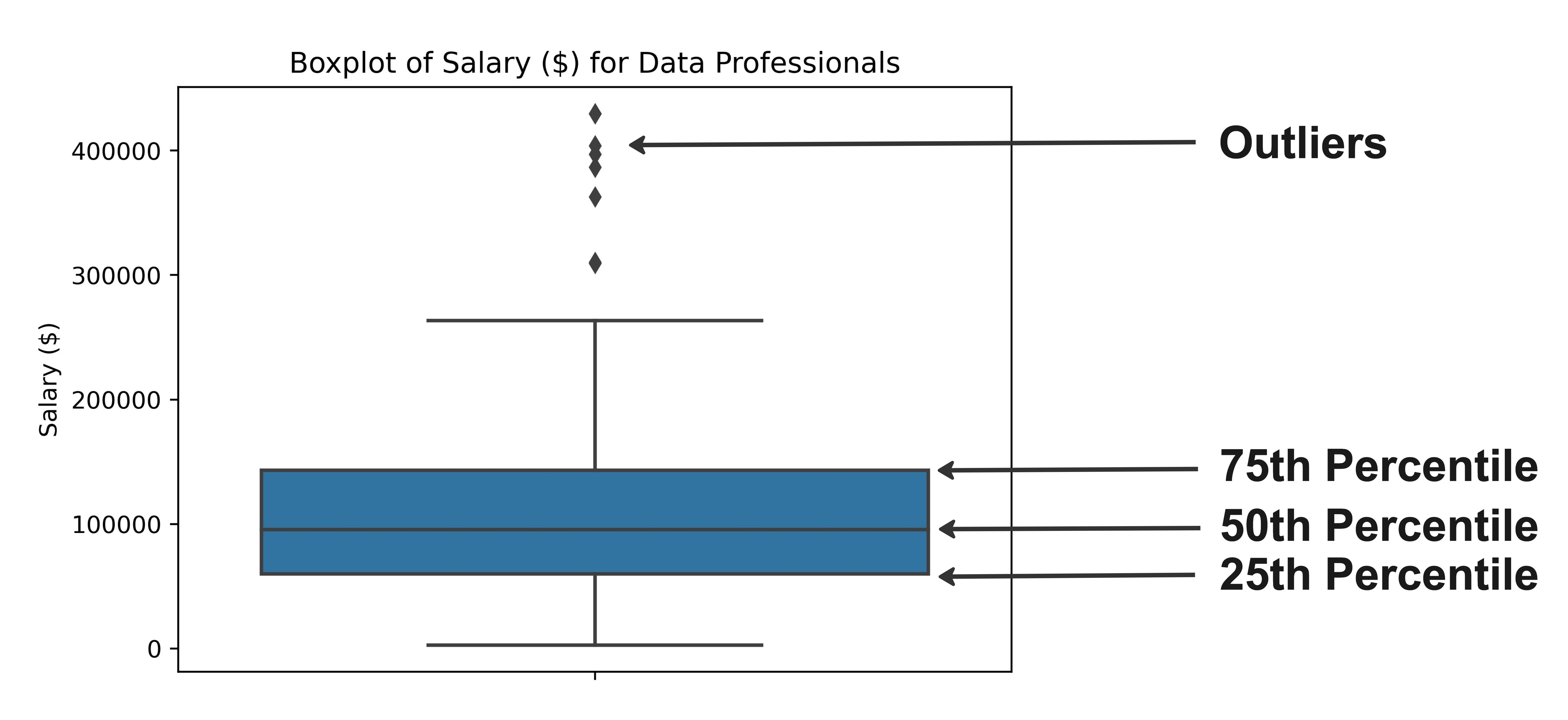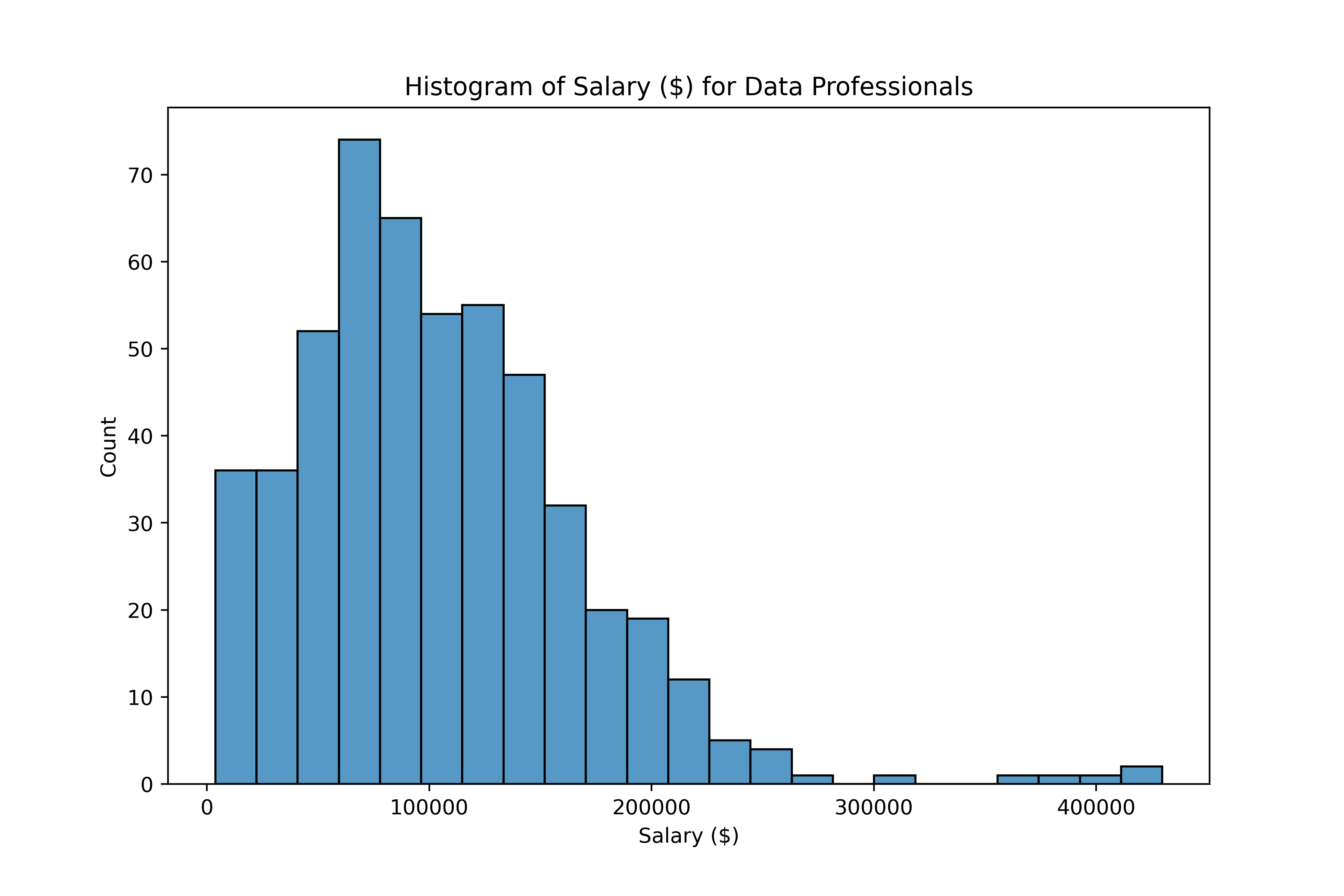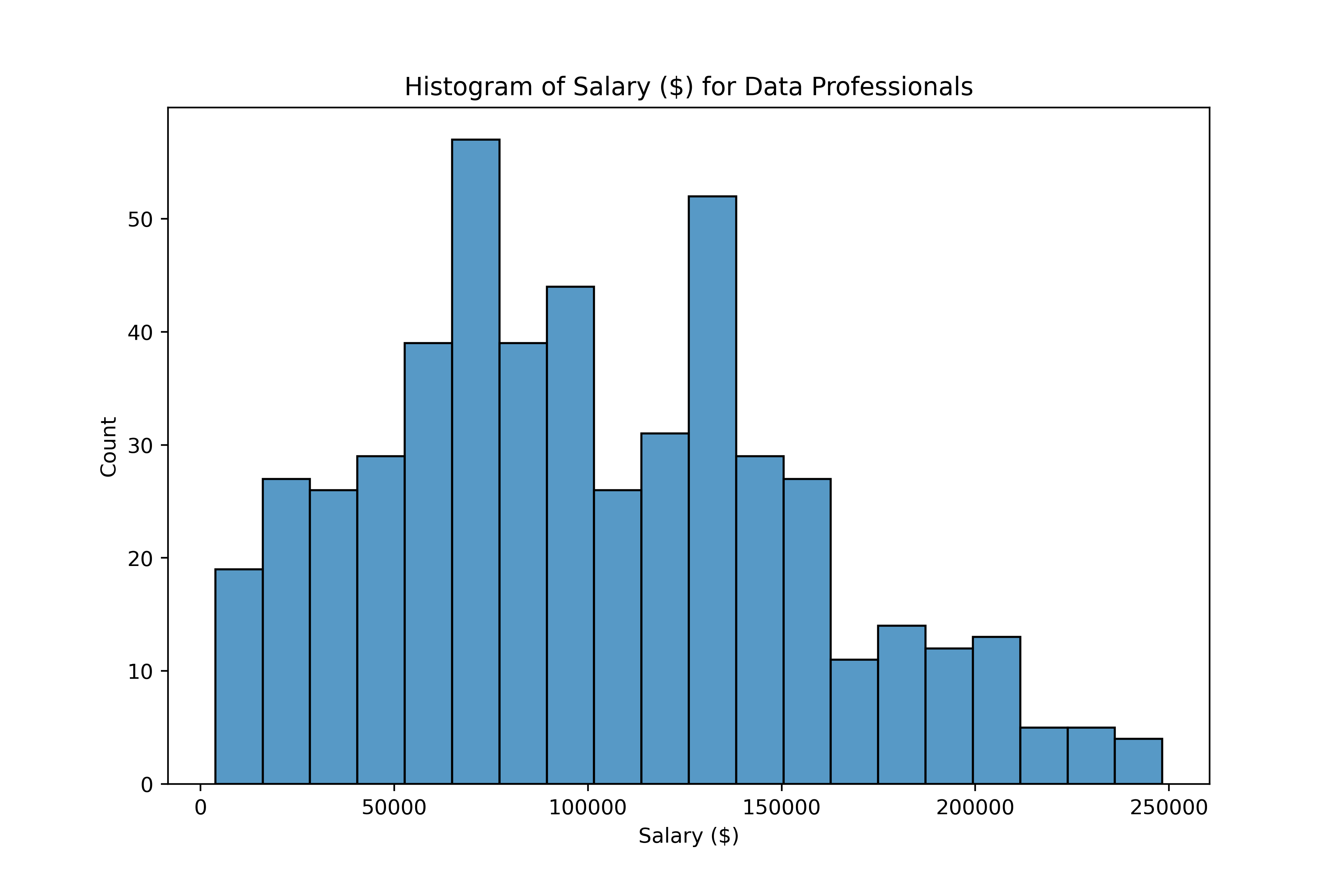Tratamento de valores discrepantes
Análise Exploratória de Dados em Python

George Boorman
Curriculum Manager, DataCamp
O que é uma discrepância?
- Uma observação bem diferente dos outros dados
- Preço médio das casas: US$ 400.000
- Preço atípico da casa: US$ 5.000.000
- Considerar por que o valor é diferente:
- Localização, número de quartos, tamanho total, etc.

1 Crédito da imagem: https://unsplash.com/@ralphkayden
Usar estatísticas descritivas
print(salaries["Salary_USD"].describe())
count 518.000
mean 104905.826
std 62660.107
min 3819.000
25% 61191.000
50% 95483.000
75% 137496.000
max 429675.000
Name: Salary_USD, dtype: float64
Usar o intervalo interquartil
Intervalo interquartil (IQR)
- IQR = percentil 75 - percentil 25
IQR em diagramas de caixa
sns.boxplot(data=salaries,
y="Salary_USD")
plt.show()

Usar o intervalo interquartil
Intervalo interquartil (IQR)
- IQR = percentil 75 - percentil 25
- Discrepâncias superiores > 75º percentil + (1,5 * IQR)
- Discrepâncias inferiores < 25º percentil - (1,5 * IQR)
Identificar limites
# 75th percentile seventy_fifth = salaries["Salary_USD"].quantile(0.75)# 25th percentile twenty_fifth = salaries["Salary_USD"].quantile(0.25)# Interquartile range salaries_iqr = seventy_fifth - twenty_fifthprint(salaries_iqr)
76305.0
Identificação de valores discrepantes
# Upper threshold upper = seventy_fifth + (1.5 * salaries_iqr)# Lower threshold lower = twenty_fifth - (1.5 * salaries_iqr)print(upper, lower)
251953.5 -53266.5
Criar subconjunto dos dados
salaries[(salaries["Salary_USD"] < lower) | (salaries["Salary_USD"] > upper)] \[["Experience", "Employee_Location", "Salary_USD"]]
Experience Employee_Location Salary_USD
29 Mid US 429675.0
67 Mid US 257805.0
80 Senior US 263534.0
83 Mid US 429675.0
133 Mid US 403895.0
410 Executive US 309366.0
441 Senior US 362837.0
445 Senior US 386708.0
454 Senior US 254368.0
Por que procurar discrepâncias?
Discrepâncias são valores extremos
- podem não representar com precisão nossos dados
Podem alterar a média e o desvio padrão
Testes estatísticos e modelos de aprendizado de máquina precisam de dados distribuídos normalmente
O que fazer com discrepâncias?
Perguntas a fazer:
- Por que essas discrepâncias existem?
- Cargos mais altos / outros países pagam mais
- Considere deixá-las no conjunto de dados
- Os dados estão corretos?
- Pode ter ocorrido algum erro na coleta de dados?
- Se for o caso, remova-os
- Pode ter ocorrido algum erro na coleta de dados?
Excluir discrepâncias
no_outliers = salaries[(salaries["Salary_USD"] > lower) & (salaries["Salary_USD"] < upper)]
print(no_outliers["Salary_USD"].describe())
count 509.000000
mean 100674.567780
std 53643.050057
min 3819.000000
25% 60928.000000
50% 95483.000000
75% 134059.000000
max 248257.000000
Name: Salary_USD, dtype: float64
Distribuição de salários


Vamos praticar!
Análise Exploratória de Dados em Python

